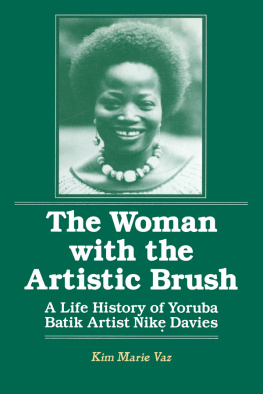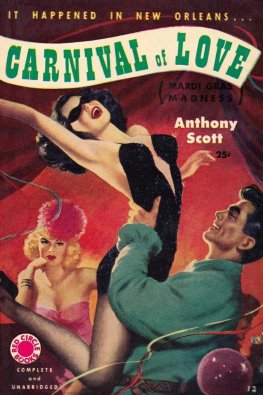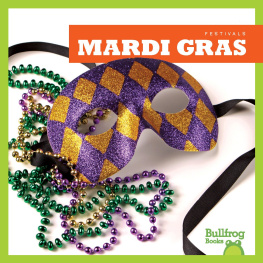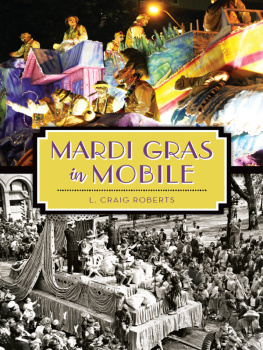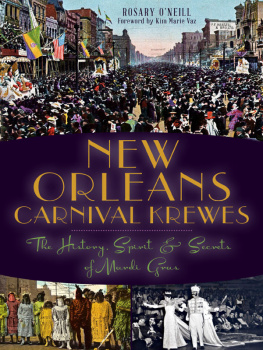Kim Marie Vaz - The Baby Dolls: Breaking the Race and Gender Barriers of the New Orleans Mardi Gras Tradition (Eisenhower Center Studies on War and Peace)
Here you can read online Kim Marie Vaz - The Baby Dolls: Breaking the Race and Gender Barriers of the New Orleans Mardi Gras Tradition (Eisenhower Center Studies on War and Peace) full text of the book (entire story) in english for free. Download pdf and epub, get meaning, cover and reviews about this ebook. year: 2013, publisher: LSU Press, genre: Home and family. Description of the work, (preface) as well as reviews are available. Best literature library LitArk.com created for fans of good reading and offers a wide selection of genres:
Romance novel
Science fiction
Adventure
Detective
Science
History
Home and family
Prose
Art
Politics
Computer
Non-fiction
Religion
Business
Children
Humor
Choose a favorite category and find really read worthwhile books. Enjoy immersion in the world of imagination, feel the emotions of the characters or learn something new for yourself, make an fascinating discovery.

- Book:The Baby Dolls: Breaking the Race and Gender Barriers of the New Orleans Mardi Gras Tradition (Eisenhower Center Studies on War and Peace)
- Author:
- Publisher:LSU Press
- Genre:
- Year:2013
- Rating:5 / 5
- Favourites:Add to favourites
- Your mark:
The Baby Dolls: Breaking the Race and Gender Barriers of the New Orleans Mardi Gras Tradition (Eisenhower Center Studies on War and Peace): summary, description and annotation
We offer to read an annotation, description, summary or preface (depends on what the author of the book "The Baby Dolls: Breaking the Race and Gender Barriers of the New Orleans Mardi Gras Tradition (Eisenhower Center Studies on War and Peace)" wrote himself). If you haven't found the necessary information about the book — write in the comments, we will try to find it.
One of the first womens organizations to mask in a Mardi Gras parade, the Million Dollar Baby Dolls redefined the New Orleans carnival tradition. Tracing their origins from Storyville brothels and dance halls to their re-emergence in post-Katrina New Orleans, author Kim Vaz uncovers the fascinating history of the raddy-walking, shake-dancing, cigar-smoking, money-flinging ladies that strutted their way into a predominantly male establishment.
The Baby Dolls formed around 1912 as an organization for African American women who used their profits from working in New Orleanss red-light district to compete with other black women in their profession on Mardi Gras. Part of this competition involved the tradition of masking in which carnival groups create a collective identity through costuming. Their baby doll costumesshort satin dresses, stockings with garters, and bonnetsset against their bold and provocative public behavior not only exploited stereotypes but also empowered and made visible an otherwise marginalized demographic of women.
In addition to their subversive presence at Mardi Gras, the Baby Dolls helped shape the sound of jazz in the city. The Baby Dolls often worked in and patronized dance halls and honky-tonks, where they introduced new dance steps and challenged house musicians to keep up the beat. The entrepreneurial Baby Dolls also sponsored dances with live jazz bands, effectively underwriting the advancement of an art form now inseparable from New Orleanss identity.
Over time, the Baby Dolls members diverged as different neighborhoods adopted the tradition. Groups such as the Golden Slipper Club, the Gold Diggers, the Rosebud Social and Pleasure Club, and the Satin Sinners stirred the creative imagination of middle-class Black women and men across New Orleans, from the downtown Trem area to the uptown community of Mahalia Jackson.
Vaz follows the Baby Doll phenomenon through one hundred years of photos, articles, and interviews to conclude with the birth of contemporary groups such as the modern day Antoinette K-Does Ernie K-Doe Baby Dolls, the New Orleans Society of Dances Baby Doll Ladies, and the Trem Million Dollar Baby Dolls. Her book celebrates these organizations crucial contribution to Louisianas cultural history.
Kim Marie Vaz: author's other books
Who wrote The Baby Dolls: Breaking the Race and Gender Barriers of the New Orleans Mardi Gras Tradition (Eisenhower Center Studies on War and Peace)? Find out the surname, the name of the author of the book and a list of all author's works by series.

